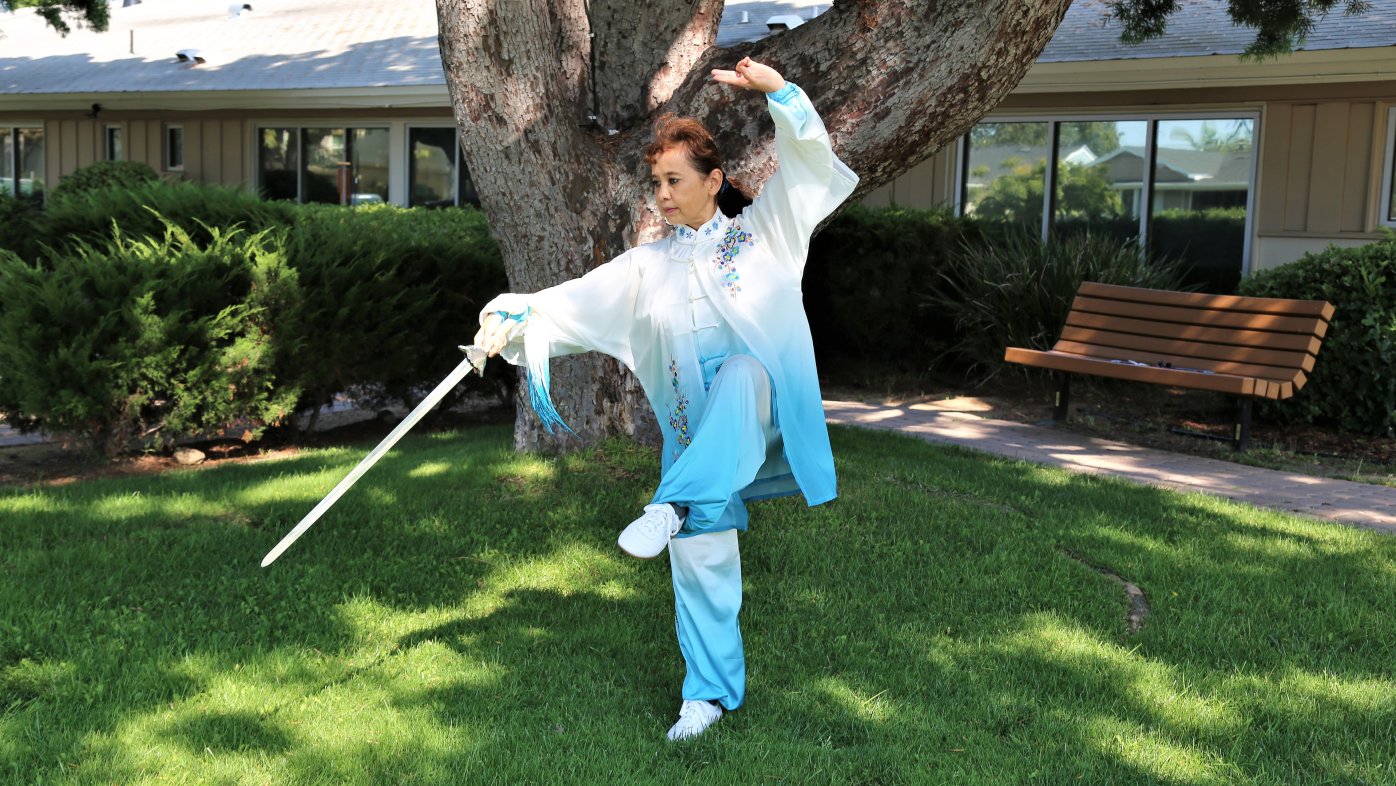
Bringing ancient Chinese traditions to Sharp
Noel Tarver, a tai chi competitor, teaches the ancient martial art to patients at Sharp Coronado.
Is chronic knee pain keeping you from participating in activities you enjoy? Do you find yourself riding the elevator instead of taking the stairs or seeking out a parking spot as close to an entrance as possible? If so, Dr. Joseph Jankiewicz, a Sharp Rees-Stealy orthopedic surgeon affiliated with Sharp Coronado Hospital, says you should consider the variety of options available for treating your joint pain and arthritis.
“There are many people who used to live an active lifestyle, but now have severe pain that keeps them from doing the things they once enjoyed,” Dr. Jankiewicz says. “Things like exercise, tasks around the home, spending time outdoors and partaking in favorite hobbies can be severely affected by knee pain.”
According to Dr. Jankiewicz, there are three types of arthritis that most commonly lead to joint pain:
Osteoarthritis: Sometimes called degenerative arthritis, it is a “wearing out” condition involving the breakdown of cartilage in the joints.
Rheumatoid arthritis: The joint lining (synovium) swells, invades surrounding tissues, and produces chemical substances that attack and destroy the joint surface.
Inflammatory arthritis: There are several disease processes that can also cause inflammation in the joints and can lead to cartilage destruction.
Nonsurgical treatment of knee pain
While some people will require advanced treatments, nonsurgical treatment options for knee pain include:
Diet
Maintaining a balanced diet can help you stay healthy and manage your weight. Losing excess weight reduces the stress on weight-bearing joints and can resolve pain.
“Extra pressure on some joints may aggravate your arthritis,” Dr. Jankiewicz says. “If you lose just 1 pound, you reduce the force your knees must absorb when you walk by 4 pounds.”
Exercise
Regular exercise, including stretching exercises; aerobic exercises, such as walking or biking; and strengthening exercises, including weight training and resistance training, can help relieve knee pain and improve mobility.
“Stretching helps to maintain normal joint movement, increase flexibility and relieve stiffness,” Dr. Jankiewicz says. “Aerobic exercise improves your heart health, can help control weight and can help reduce inflammation in joints; and strengthening exercises help slow the progress of osteoporosis, build strong bones and increase muscle strength to support the joints affected by arthritis.”
Your doctor may recommend you see a physical therapist, who can provide exercises designed to preserve the strength and use of your joints. Both are key to maintaining the ability to perform daily activities.
Medications
Over-the-counter pain relievers that include ibuprofen, aspirin or naproxen, and topical patches, rubs and ointments may provide temporary relief. Some people may find glucosamine and chondroitin supplements help relieve joint pain.
“Supplements are usually well tolerated,” says Dr. Jankiewicz. “But always talk to your doctor before taking them.”
Steroids and injections
Used to decrease inflammation, steroids can be given topically, orally and by injection. Hyaluronic acid injections may also reduce pain and increase mobility.
“Injections are generally well tolerated,” says Dr. Jankiewicz. “They may help ease the pain and stiffness of arthritic joints. However, individual results vary from temporary relief to longer-lasting suppression of symptoms.”
Advanced treatment for knee pain
If you have tried several treatment options and have not found pain relief, you may benefit from discussing joint replacement options with an orthopedic specialist. The goals of knee replacement include relieving pain, restoring motion and getting you back to your favorite activities.
“When you visit an orthopedic specialist, they will take into account the characteristics that are unique to you in deciding what treatment option best suits you and your lifestyle,” Dr. Jankiewicz says.
Advanced treatment options include partial knee resurfacing and total knee replacement. Partial knee resurfacing, or PKR, allows a surgeon to replace only the diseased or damaged areas of a knee rather than having to replace the entire joint. Total knee replacement offers the potential for greater implant longevity and is designed to provide natural knee movement.
“Talk with your doctor about the range of treatment options available, including Mako® robotic-arm assisted surgery,” Dr. Jankiewicz says. “Find out what will help you get your active life back.”
Learn more at an upcoming free webinar, Advanced Treatments for Knee Pain, hosted by Sharp Grossmont Hospital on Tuesday, August 22, Sharp Memorial Hospital on Wednesday, August 23 and Sharp Coronado Hospital on Thursday, August 24.
Our weekly email brings you the latest health tips, recipes and stories.